In the spring of 2011, the Conservation Department was awarded a grant from the Institute for Museum and Library Services to undertake a detailed conservation survey of the Asian Art Museum’s Korean paintings collection.

A conservation survey asks several broad questions. Can the paintings be safely handled? Can they be exhibited without causing new damage? If a painting does require conservation work, how much should be done? In the case of Korean paintings, is a full remounting needed, or will minor repairs be enough to stabilize the condition? To answer these questions each painting is examined, and the materials and condition carefully documented. The results are used to decide conservation priorities and strategies for years to come. A survey is also an opportunity to compare materials and techniques, assess past restorations, and raise new research ideas and connoisseurship questions.
To ensure that the survey correctly identified and assessed both the paintings and the mounts, the Conservation Department brought in an expert in Korean paintings conservation for help. Thanks to the IMLS grant, Korean paintings expert Professor Chi-sun Park and assistant Eun-Hye Cho were able to assist with the survey. The Director of the Jung-Jae Conservation Center in Seoul, Korea and a professor of Cultural Preservation at Yongin University, Professor Park has made an in-depth study of Korean paintings worldwide and is the author of numerous important publications exploring materials and techniques used in historically accurate Korean mounts. The Asian’s Conservator of Paintings Shiho Sasaki and Associate Curator of Korean Art Hyonjeong Kim Han collaborated on the survey.
The survey identified a number of important scrolls that need to be remounted, as well as other paintings that need only minor treatment. The pair of calligraphy scrolls below is one example of a complete remounting treatment. The calligraphy couplet is an important and meaningful object for Koreans and for the history of East Asian calligraphy.
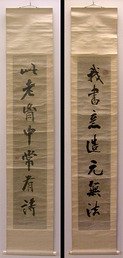
The image above shows the scrolls before conservation treatment. Notice how deep creases in the mount are distorting the painting, leaving it difficult to read and in danger of tearing. The image below show the calligraphy poems newly remounted in a traditional Korean style. The mount colors and design were selected based on other historic scroll mounts used for the same artist. Look for these scrolls in the Korean galleries soon!

In addition to determining conservation needs, the survey revealed some interesting discoveries. Special painting techniques and rare surviving forms were brought to light by Professor Park as the paintings were examined. The new information has been added to the permanent records of the museum, to help determine future conservation plans, exhibitions and loans.
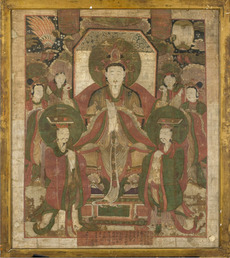
Not all Korean paintings are scrolls! This Buddhist painting was found framed in an inappropriate European-style frame. It was probably originally displayed as a panel in a monastery temple. The white border and red painted tabs at the top are uniquely Korean design elements that rarely survive, since many paintings have been trimmed down over the centuries. We are fortunate that this painting was never mistakenly mounted as a scroll, since these details could easily have been lost. Eventually, this painting will be returned to the panel format preferred by Buddhist monastic artists of the period.
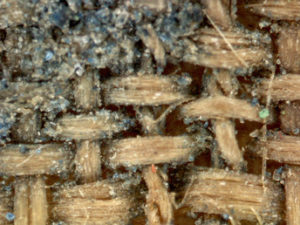
Microscopic examination often reveals condition problems not visible to the naked eye. The fabric used for Indra and Buddhist Guardians received close scrutiny. Using a portable digital microscope, details such as fiber types, thickness, and worn areas on the painting and mounts were compared. Small variations can indicate when and where a painting was made and mounted, helping conservators and curators to decide if the work is a high priority for treatment or remounting. Scrolls created for the royal family, for example, would be painted on the highest quality of silk, woven and stitched by dedicated artisans. By the Joseon dynasty, however, royal patronage had shifted away from Buddhist subjects. A Joseon Buddhist image such as this one might be painted on cotton, with more variation in the fibers and weave.
These portraits were identified as the original drafts for important finished portraits known to be in Korean collections. Microscopy also helps conservators understand how artworks are constructed, so they can make better decisions on treatment and care.
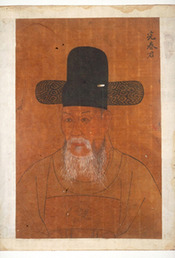

Conservators discovered that the brown color of the paper derives from a vegetable coating, possibly soy, which was brushed over the paper to give it transparency. The artist then applied paint to both sides of the paper to add depth and subtle tints to the facial features. This special technique helped to simulate the appearance of the final portraits on silk.
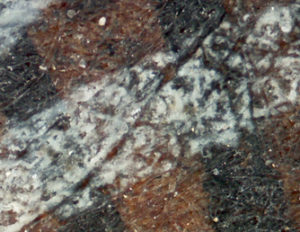
Eight of these portraits on paper were mounted together in an album. A simplified drawing of the album style is shown below. These paintings will be cleaned and remounted in the same format.
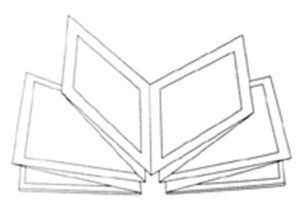
The Korean paintings survey was made possible by the combined efforts of many people within the Asian Art Museum and internationally. The survey was funded through an Institute for Library and Museum Services Project Support Grant, and matching funds raised through museum development activities. Additional support for conservation treatments was provided by the Korean Art and Culture Committee. Lecture support was provided by the Society for Asian Art and language translation by museum volunteers. Special thanks are due to Chi-sun Park and Eun-Hye Cho of the Jung-jae Conservation Center in Seoul, Korea.
Chi-sun Park. “Korean traditional mounting (janghwang),” The Paper Conservator, ICON Institute of Conservation, volume 30 (2006).
The Finishing Touch: Works of the Brush and Their Mounting (2008). Special Exhibition of the National Palace Museum of Korea, September 5 – November 2, 2008.
Kim, Hongnam. The Story of a Painting: A Korean Buddhist Treasure from the Mary and Jackson Burke Foundation (1991). The Asia Society Galleries, New York.
Korean Paintings and Calligraphy of National Museum of Korea, vol. 15: Joseon Portraits I (2007). Seoul, National Museum of Korea.
Korean Paintings and Calligraphy of National Museum of Korea, vol. 17: Joseon Portraits III (2009). Seoul, National Museum of Korea.
Cho Sun-mie. Great Korean Portraits: Immortal images of the noble and the brave (2010). Dolbegae Publishers, Korea. English Edition 2010 translated by Lee Kyoong-hee.
Lee Soomi, “Two Stages in the Production Process of Late Joseon Portraits: Sketches and Reverse Coloring,” Journal of Korean Art & Archaeology, Vol. 5 (2011), 39ff.
This project is made possible by a grant from the Institute of Museum and Library Services.